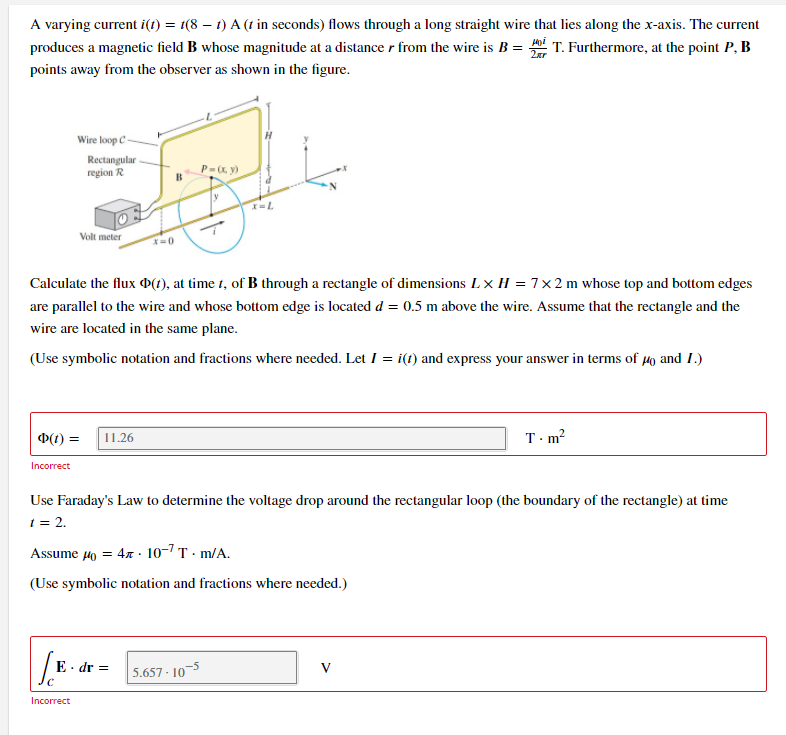A varying current i(1) = 1(8 – 1) A (t in seconds) flows through a long straight wire that lies along the x-axis. The current produces a magnetic field B whose magnitude at a distance r from the wire is B = T. Furthermore, at the point P, B 2ar points away from the observer as shown in the figure.
A varying current i(1) = 1(8 – 1) A (t in seconds) flows through a long straight wire that lies along the x-axis. The current produces a magnetic field B whose magnitude at a distance r from the wire is B = T. Furthermore, at the point P, B 2ar points away from the observer as shown in the figure.
Related questions
Question
16.5 - #12

Transcribed Image Text:A varying current i(t) = 1(8 – t) A (t in seconds) flows through a long straight wire that lies along the x-axis. The current
produces a magnetic field B whose magnitude at a distance r from the wire is B = i T. Furthermore, at the point P, B
2ar
points away from the observer as shown in the figure.
Wire loop C-
Rectangular
region R
P=, y)
Volt meter
Calculate the flux P(1), at time 1, of B through a rectangle of dimensions Lx H = 7× 2 m whose top and bottom edges
are parallel to the wire and whose bottom edge is located d = 0.5 m above the wire. Assume that the rectangle and the
wire are located in the same plane.
(Use symbolic notation and fractions where needed. Let 1 = i(t) and express your answer in terms of 4o and 1.)
D(1) =
11.26
T-m?
Incorrect
Use Faraday's Law to determine the voltage drop around the rectangular loop (the boundary of the rectangle) at time
1 = 2.
Assume 4o = 4x · 10-7 T · m/A.
(Use symbolic notation and fractions where needed.)
E · dr =
5.657 - 103
V
Incorrect
Expert Solution
This question has been solved!
Explore an expertly crafted, step-by-step solution for a thorough understanding of key concepts.
This is a popular solution!
Trending now
This is a popular solution!
Step by step
Solved in 2 steps
